The city centre that most tourists visit is divided into three parts; the old and new town is located east of the Charles Bridge while the small town is on the western side. You can read more about the old town here and the new city here. The small town is sandwiched between two substantial hills and is home to Prague Castle, Strahov Monastery, Petrine Park and much more.



Once you make it up the last step, you are rewarded with a great view and one of Prague's best cafes, IPPA Café. They have a wide range of cakes and pastries that are not only delicious but also beautiful to look at. When we looked at the other tables' order, we realised that our cakes were among the simpler creations but they were still very good. The abbreviation in the name stands for international prague pastry academy and as the name suggests, they also have courses for those who want to become pastry chefs.
Next to the café, there was also a frightening example of what happens if you don't have enough coffee. However, I can assure you that there is no imminent risk of us falling into this tragic category.


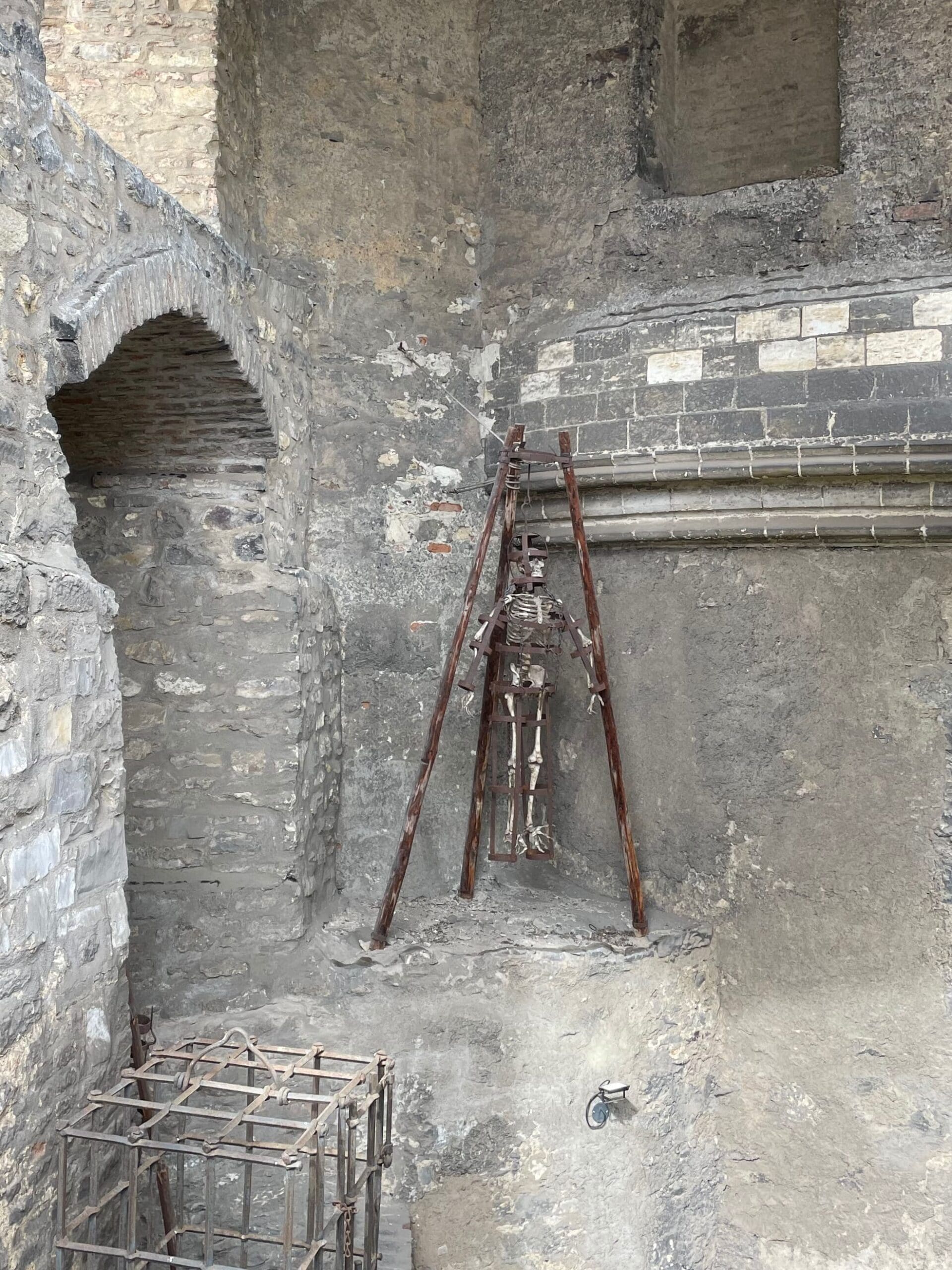
In the area called Prague Castle there are a number of attractions and according to the Guinness Book of Records, the castle is "the largest ancient castle in the world". However, I am a little sceptical about this claim partly because it began to be built in 890, ie after the ancient times, but even if you interpret the word ancient a little more freely, it still feels like there are larger castles. You can read about our visit to the Alhambra, for example here.
There is a ticket that gives access to all the sights in the area but if you come "from the back", i.e. from the eastern side, it is not entirely obvious where to buy them. On the other side of the area, the west side, there is a large ticket office that is easy to find but the smaller one, on the east side, is tucked away in a small alley with no signage whatsoever.



One of the largest buildings in the area is St Vitus' Cathedral. It began construction in 1344 when the parish in the city outgrew the old church, but for various reasons it wasn't fully completed until the mid-19th century. It is built in the French Gothic style which perhaps makes the exterior feel dark, heavy and ominous rather than beautiful. If this had been the first cathedral we had visited, we would probably have described it as big and grand, but with Milan still fresh in our minds, at least the exterior felt almost modest. Read more about our visit to Milan here.
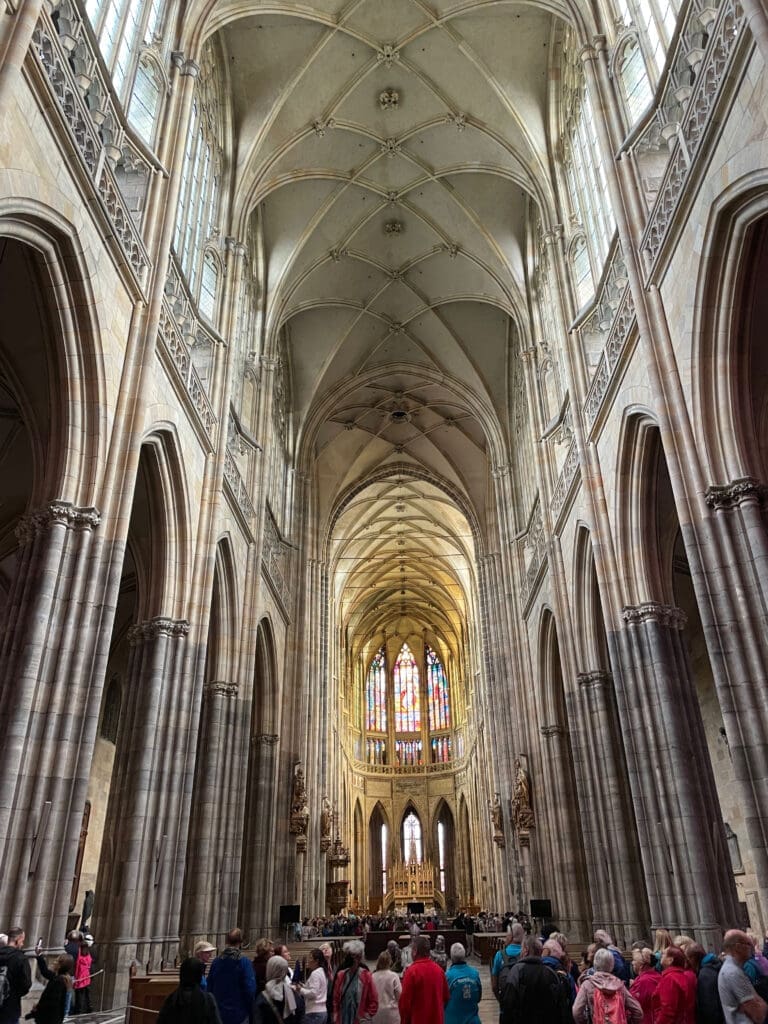





The interior is all the more impressive. A long central nave with beautiful columned arches runs through the entire structure. On top of the columns are windows and when the light from them falls on the delicate roof, there is a sense of space that makes the building feel bigger on the inside than the outside. Along the entire side aisle there are magnificent windows. They are in a variety of styles from different eras, but we were most impressed by those whose light fell on the side wall. There is also some mica in the mortar of the wall which further enhances the effect.

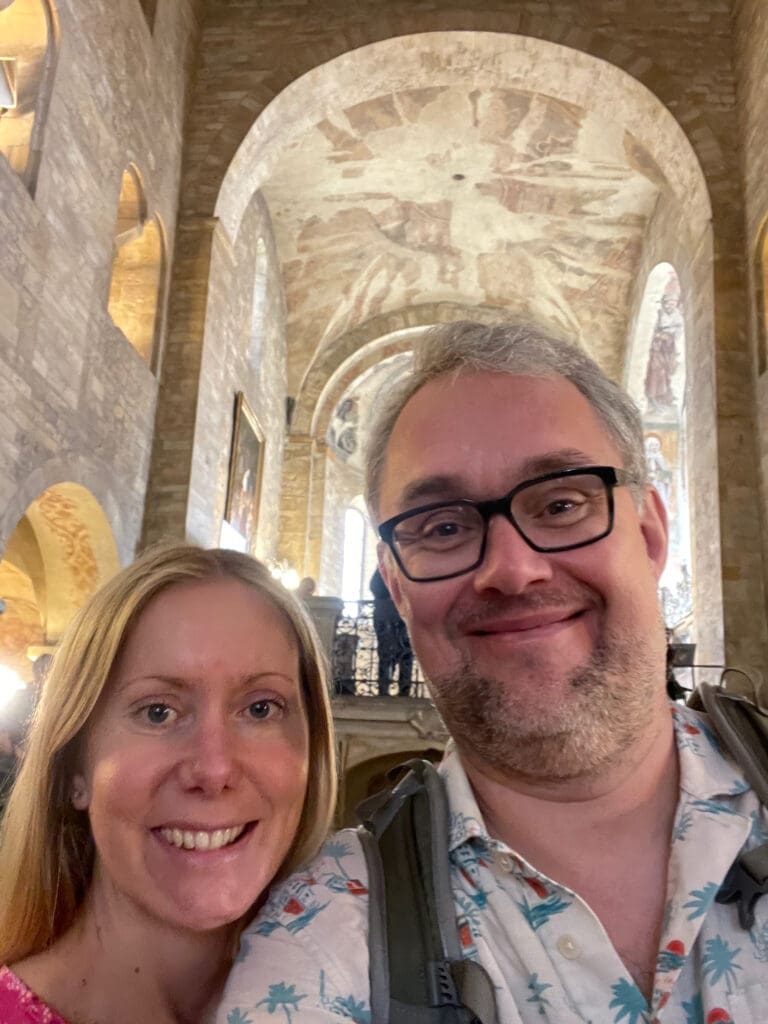



Another impressive church is Saint George's Basilica, which sits in the shadow of St Vitus Cathedral. Despite being just a stone's throw from each other, they couldn't be more different. In the larger of the two, the focus is on the extras such as gold, silver, coloured glass, carvings, sculptures, etc. that were perhaps meant to impress even dignitaries who were spoiled by this in their everyday lives. The smaller of the two, St George's, is instead stripped down and simple, obviously focusing on the sacred rather than the dignified. As you can see from the images above, there are exceptions to the simplicity, but in a small, limited space. Both buildings are impressive in their own way but personally I always prefer the beauty of simplicity.
Not much remains of the original church built in 920, but there is a small exhibition describing the history of the church in words and pictures.



The area also includes the palace itself, which has been used by a variety of royalty. Like all palaces, each generation has made its own additions and extensions, so there is a variety of styles. What we were most impressed with was the ballroom built by King Vladislaus II. In addition to the beautiful ceiling, there was also a kind of closed tile stove that really stood out among all the beige and brown colours. You can see a green version in the picture above. From what we understood, the crown jewels are also in the palace, but otherwise it is quite sparse on precious things. We learnt that this is partly because the Swedes looted the palace in the final stages of the Thirty Years' War.



In another part of the area is Golden Lane. It was originally built for the castle guard but got its name from the many goldsmiths who were based here in a later period. Nowadays, all the little houses serve as a mix of souvenir shops and museums. Above you can see some of the hundreds of pieces of armour on display and the royal laboratory. What we didn't know when we were there is that during the great flood of 2002, they found a tunnel several kilometres long that went from the lab to another house where some of the city's alchemists were based. You can read more about it here.
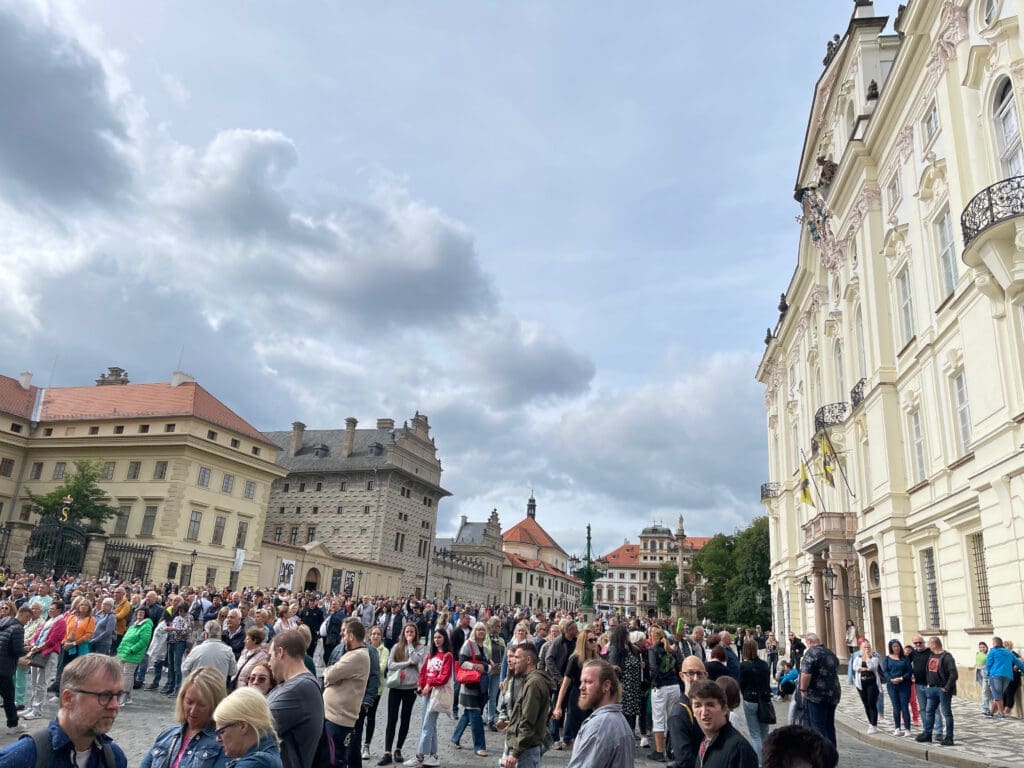

Next to the Prague Castle there is a large square and around it lots of beautiful buildings. There are also a lot of restaurants but our experience was that they were mostly tourist places so our recommendation is to rather choose one that is beyond the parliament (second picture) rather than around the palace.
If you want to see the changing of the guard, it starts from the square and then continues into the courtyard. If you don't have a ticket to the courtyard, you can see it through the grille at the end of the square. However, you have to be there in good time as the area is visited by 1.8 million people every year.


We almost missed the Strahov Monastery as we spent too much time looking for a lunch restaurant. Fortunately, we decided to make a quick visit to the monastery which we really didn't regret. It's best known for its library, as you can see in the opening image of the post and in the picture above, but there are plenty of other attractions as well. To name a few, we have the church, the gallery, the brewery and several different restaurants. Reportedly, the gallery is one of the most important in Gothic art but there are also other styles represented. Since we were in a bit of a hurry, we only had time for the library but it was really crazy beautiful and the pictures don't really do it justice.

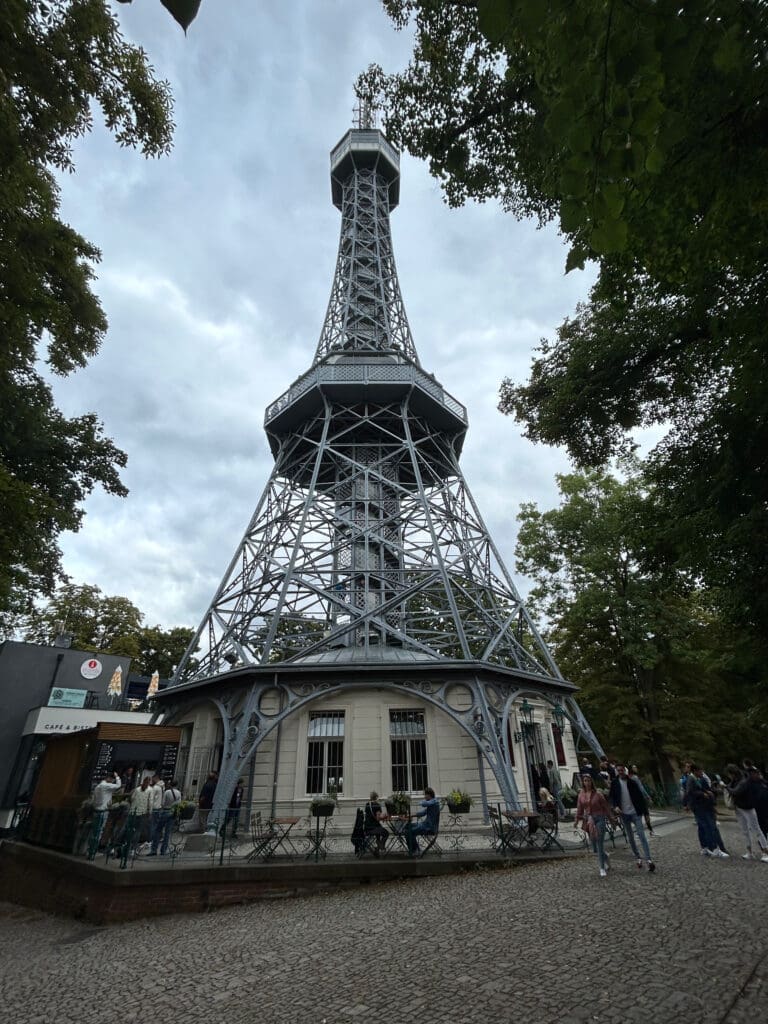

At the top of the mountain there is a large park that then extends across the entire mountainside down to the city. If you don't feel like going up, you can take the Victorian cable car, which is one of Prague's main attractions. It's actually part of the public transport system so no expensive tourist tickets are required to ride it.
When we came walking from the monastery, we couldn't believe our eyes at first as there is an Eiffel Tower sticking up between the trees! As you get closer, you realise that it's only one fifth the size of the real thing, but if you include the mountain itself, it's apparently exactly the same height as the Eiffel Tower. The engineers were of course inspired by its larger relative in Paris and was built for an anniversary in 1891. At the top of the tower, there are also a few other activities such as carousels, a house of mirrors, some simple cafés and some odd buildings.
When we were going back down to the city, we took the road through the park and it is really huge. In the park there are some restaurants and a "mystery house" with very unclear content. We interpreted it as some kind of art exhibition and shop but it was extremely unclear so we may be wrong.
Overall, it was a very rewarding and exciting day with many different experiences. I highly recommend a visit to this part of Prague as there is something for everyone. We were there for one day but then we only managed to see a fraction of the sights. Prague is really a nice city at the perfect weekend distance and considering everything we didn't have time for, it is very likely that we will return.





